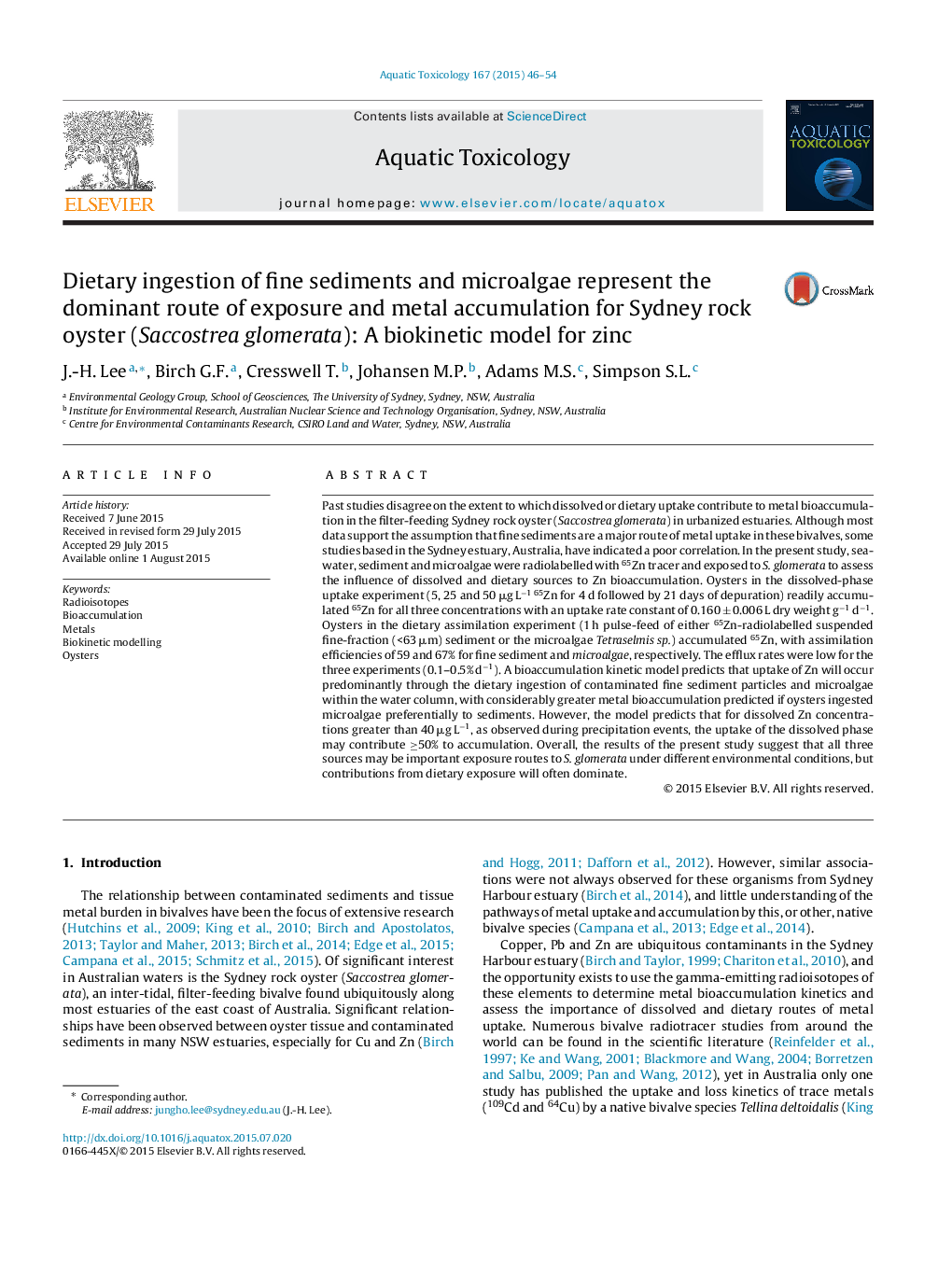| کد مقاله | کد نشریه | سال انتشار | مقاله انگلیسی | نسخه تمام متن |
|---|---|---|---|---|
| 6382142 | 1625938 | 2015 | 9 صفحه PDF | دانلود رایگان |

- Saccostrea glomerata were exposed to 65Zn from dissolved and dietary sources.
- Biokinetic model used to predict steady-state concentrations and various scenarios.
- Dietary uptake is the predominant exposure route of Zn to Sydney rock oysters.
- High dissolved Zn from stormwater may still contribute significant Zn to oysters.
- Microalgae metal concentrations should be a key priority in future research.
Past studies disagree on the extent to which dissolved or dietary uptake contribute to metal bioaccumulation in the filter-feeding Sydney rock oyster (Saccostrea glomerata) in urbanized estuaries. Although most data support the assumption that fine sediments are a major route of metal uptake in these bivalves, some studies based in the Sydney estuary, Australia, have indicated a poor correlation. In the present study, seawater, sediment and microalgae were radiolabelled with 65Zn tracer and exposed to S. glomerata to assess the influence of dissolved and dietary sources to Zn bioaccumulation. Oysters in the dissolved-phase uptake experiment (5, 25 and 50 μg Lâ1 65Zn for 4 d followed by 21 days of depuration) readily accumulated 65Zn for all three concentrations with an uptake rate constant of 0.160 ± 0.006 L dry weight gâ1 dâ1. Oysters in the dietary assimilation experiment (1 h pulse-feed of either 65Zn-radiolabelled suspended fine-fraction (<63 μm) sediment or the microalgae Tetraselmis sp.) accumulated 65Zn, with assimilation efficiencies of 59 and 67% for fine sediment and microalgae, respectively. The efflux rates were low for the three experiments (0.1-0.5% dâ1). A bioaccumulation kinetic model predicts that uptake of Zn will occur predominantly through the dietary ingestion of contaminated fine sediment particles and microalgae within the water column, with considerably greater metal bioaccumulation predicted if oysters ingested microalgae preferentially to sediments. However, the model predicts that for dissolved Zn concentrations greater than 40 μg Lâ1, as observed during precipitation events, the uptake of the dissolved phase may contribute â¥50% to accumulation. Overall, the results of the present study suggest that all three sources may be important exposure routes to S. glomerata under different environmental conditions, but contributions from dietary exposure will often dominate.
Journal: Aquatic Toxicology - Volume 167, October 2015, Pages 46-54